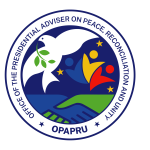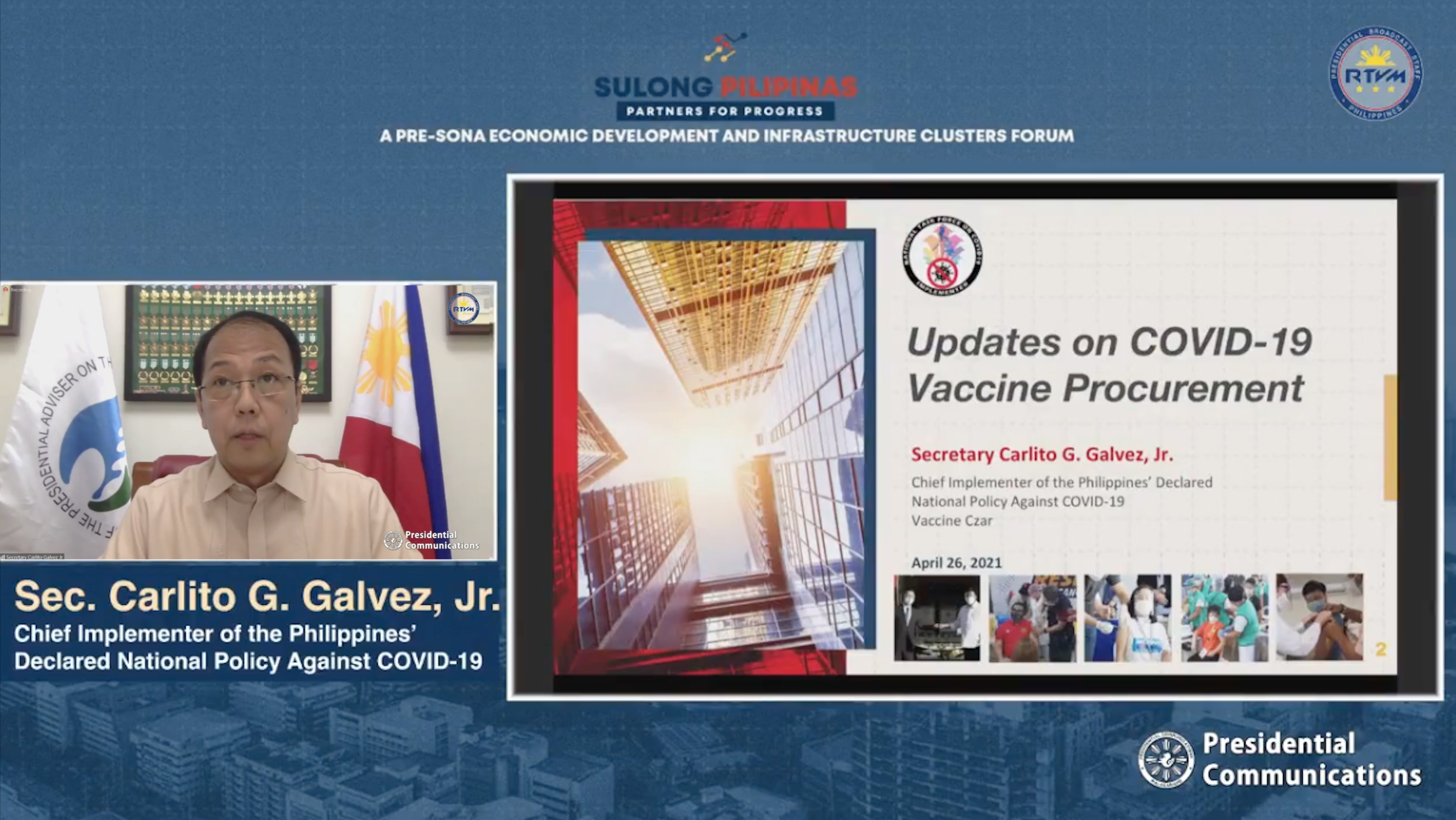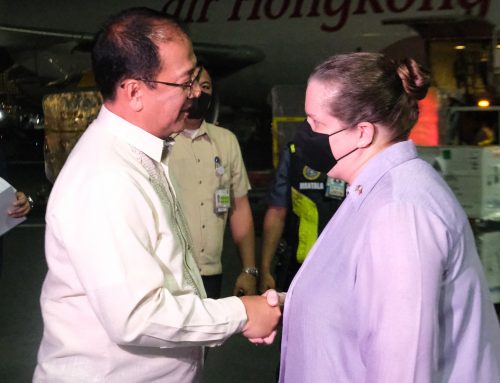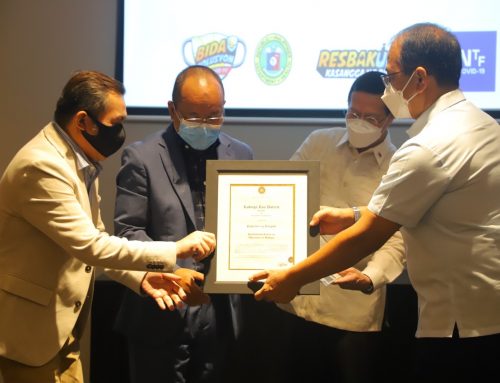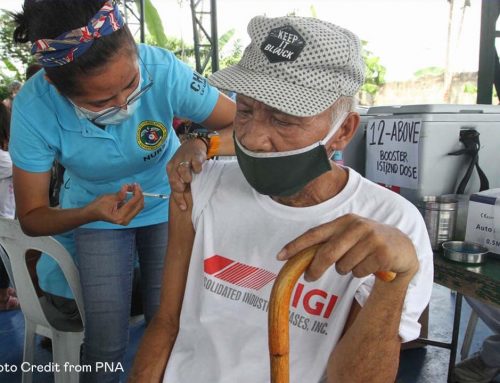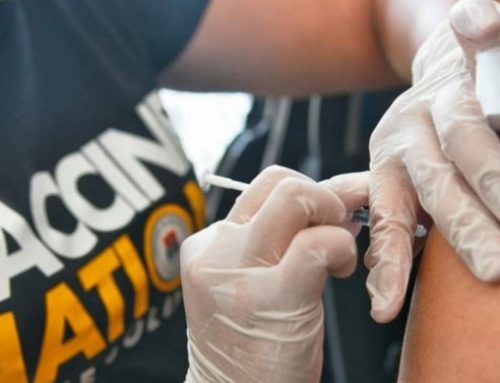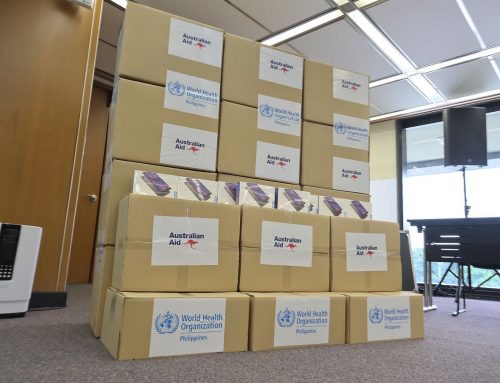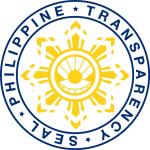PASIG CITY — In its bid to save more lives, revitalize the country’s economy, and bring back a sense of normalcy in the lives of the Filipino people by 2023, the government is leaving no stone unturned to vaccinate more Filipinos at the soonest possible time.
In his report during the “Sulong Pilipinas,” an online pre-State of the Nation Address (SONA) economic development and infrastructure clusters forum organized by the Department of Finance (DOF) on Monday, April 26, Sec. Carlito G. Galvez, Jr., National Task Force (NTF) against COVID-19 Chief Implementer and Vaccine Czar, discussed the measures being undertaken by the Duterte administration to achieve these goals.
“We can achieve herd immunity by having the target of 70 million vaccinations this year. We have a lot of supply chain experts that have already done the simulations, and we have already prepared for that (mass vaccinations),” Galvez said.
Thereafter, he said the government’s efforts will be focused on building up the nation’s capacity to manufacture its own vaccines through partnerships with local and international pharmaceutical firms.
“For 2022, we will implement our pandemic exit strategy, where we will continually address and finally defeat this pandemic,” Galvez said.
This strategy, he stressed, will still be utilized even if the COVID-19 pandemic comes to an end, as the country needs to protect itself from similar pandemics which may happen in the future.
“By 2023, we envision self-sufficiency and readiness for the next pandemic, and other disasters, with the modernization and integration of our healthcare system, in order to completely bridge our country from the valley of death from various fatal diseases,” he said.
Procurement, rollout strategies
Despite the challenges being confronted by the government in procuring vaccines, Galvez emphasized that the government’s strategy has always been to pursue all available options, enabling it to steadily build the country’s vaccine portfolio.
“The Philippine situation now must be understood in the light of very limited global supply of vaccines, where every country in the world is seeking to gain vaccines, and where 80% of the available supply has already been taken by the richest countries,” Galvez said.
“Knowing there is limited supply (of vaccines), our policy is to build a portfolio of safe and effective vaccines, working with the private sector and our local government units, because gaining access to more vaccine manufacturers and partners enables us to secure more supply for our countrymen,” he added.
To date, the Philippines has already signed supply agreements with five manufacturers— AstraZeneca, Gamaleya, Moderna, Novavax, and Sinovac.
Set to be signed within the week is the government’s supply agreement with Johnson&Johnson for six to 10 million vaccine doses.
“We are expecting to receive more or less 140 million doses by the end of this year, excluding the 44 million doses from the COVAX facility,” Galvez said.
Five of the seven vaccine manufacturers the Philippines seeks to procure vaccines from have already been issued an Emergency Use Authorization (EUA) by the Food and Drug Administration (FDA).
These companies are Sinovac, AstraZeneca, Pfizer, J&J, and Gamaleya.
Meanwhile, Moderna has already filed an application for EUA on April 26 and hopefully Novavax will follow.
Over 1.5 million Filipinos have been vaccinated as of April 26. The government expects vaccinations to significantly increase as soon as the bulk of vaccines arrive in the country in the latter part of the second quarter through the third quarter of 2021.
So far, persons belonging to categories A1 (healthcare workers), A2 (senior citizens) and A3 (persons with co-morbidities) have received their anti-COVID-19 jabs.
“By June, we can open vaccination for our productive population, with the government and economic frontliners, as well as the indigent population, categorized as A4 and A5. By August, when supply is aplenty, we will open the vaccination to the general public,” Galvez said. ###

